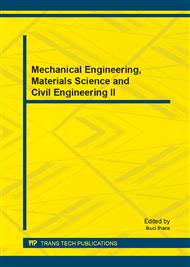p.847
p.857
p.862
p.866
p.871
p.876
p.880
p.884
p.889
Study of the Lighting of Entrance/Exit Segments of Urban Tunnels and Outside-Tunnel Roads Based on Visual Efficiency Theory
Abstract:
In order to avoid the black-hole effect, illumination of higher luminance should be installed at the entrance/exit segments of urban tunnels during the day because the luminance of outside urban tunnels is relatively high. But it basically remains the same higher (current status in China) during the night while the illuminating brightness of outside-tunnel urban roads is relatively lower, which is not conducive to driving safety and wastes lots of energy. Through the comparison research of domestic and foreign relevant standards of tunnel and road lighting, as well as measurement and analysis of the present status of entrance/exit segments lighting of 11 tunnels in Fujian, Guizhou, Chongqing, and the present status of some roads lighting in Beijing, Shanghai, Chengdu and Chongqing, it is found that there are significant differences between the luminance of tunnels entrance/exit segments and the luminance of outside-tunnel roads. Especially when drive from the bright inside to the outside, that is from the inside photopic vision environment to the outside scotopic vision and mesopic vision environment. Due to high speed and poor visual fitness, there exist potential safety hazards. At present, there is no visual fitness standard for lighting of entrance/exit segments of urban tunnels and outside-tunnel roads in china, the domestic and foreign relative researches are still not enough. Based on visual features, with response time as parameter, this article applies the visual efficiency method to study the lighting of entrance/exit segments of urban tunnels and outside-tunnel roads. In this thesis, the method of weakening illumination of entrance/exit segments of urban tunnels on the basis of existing standards and enhancing illumination of outside-tunnel roads has been provided. Thus the reduced value of entrance/exit segments of urban tunnels illumination and outside-tunnel roads illumination can be controlled from 3:1 to 5:1 to adapt to visual features. This thesis provides a new research approaches for achieving driving safety and lighting energy saving.
Info:
Periodical:
Pages:
871-875
Citation:
Online since:
December 2013
Authors:
Price:
Сopyright:
© 2014 Trans Tech Publications Ltd. All Rights Reserved
Share:
Citation:


